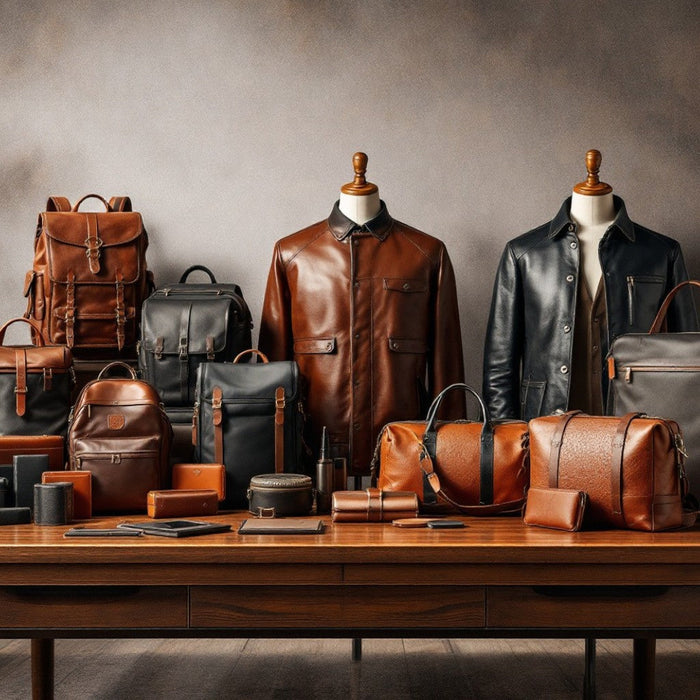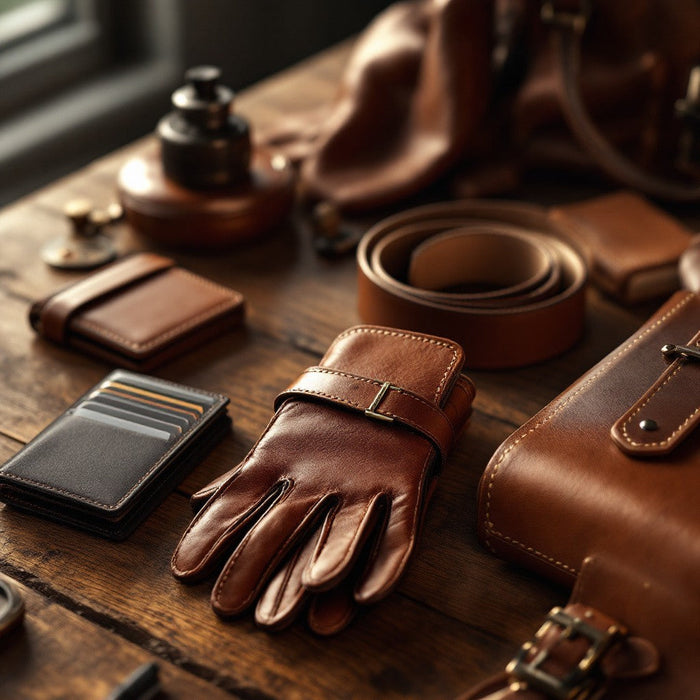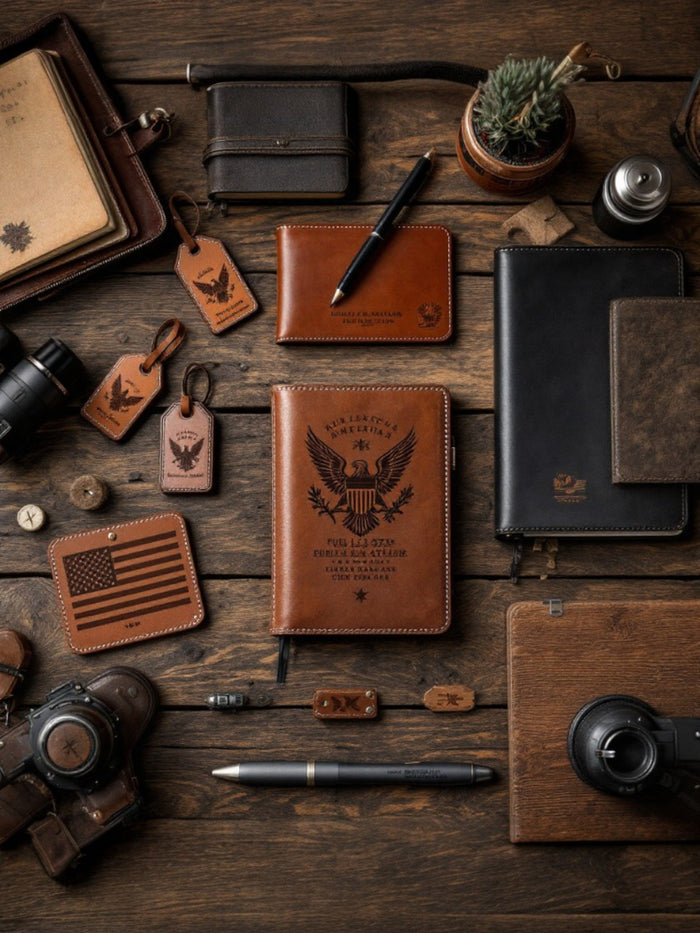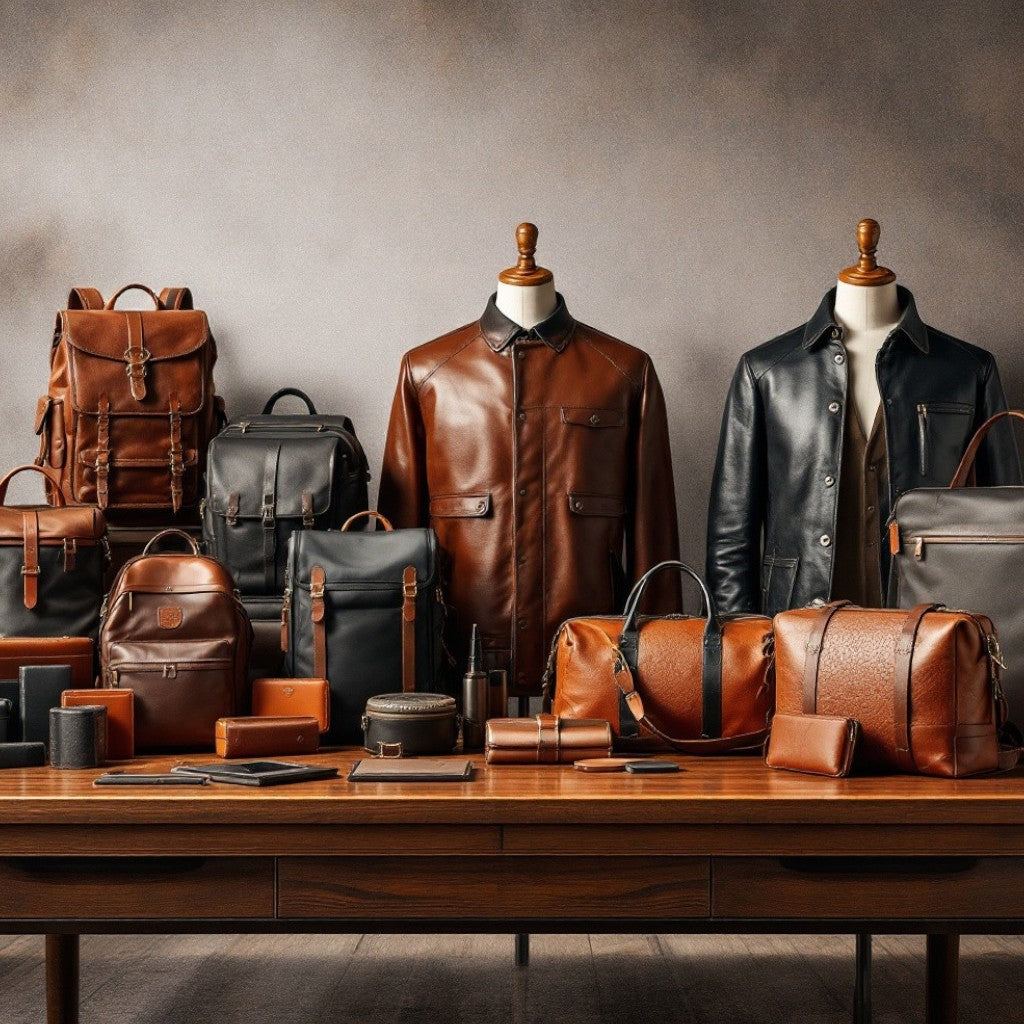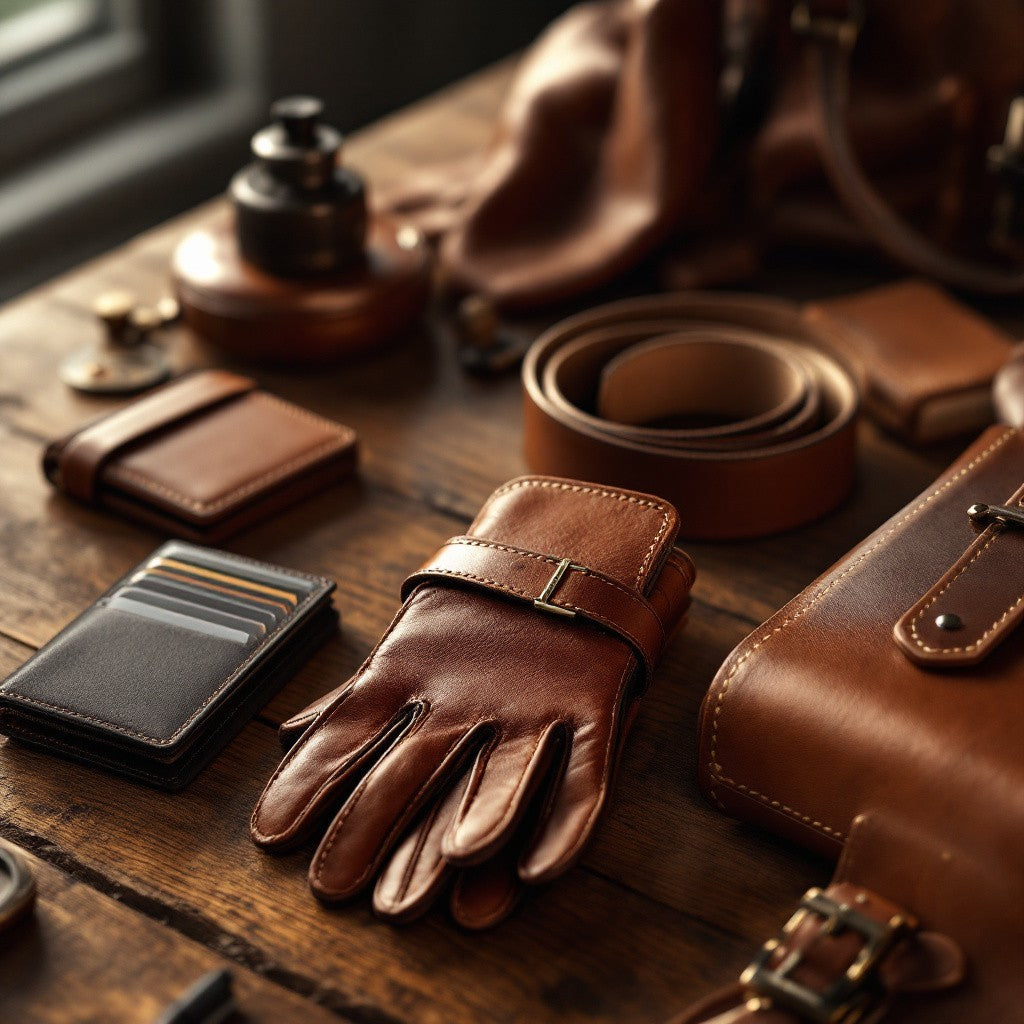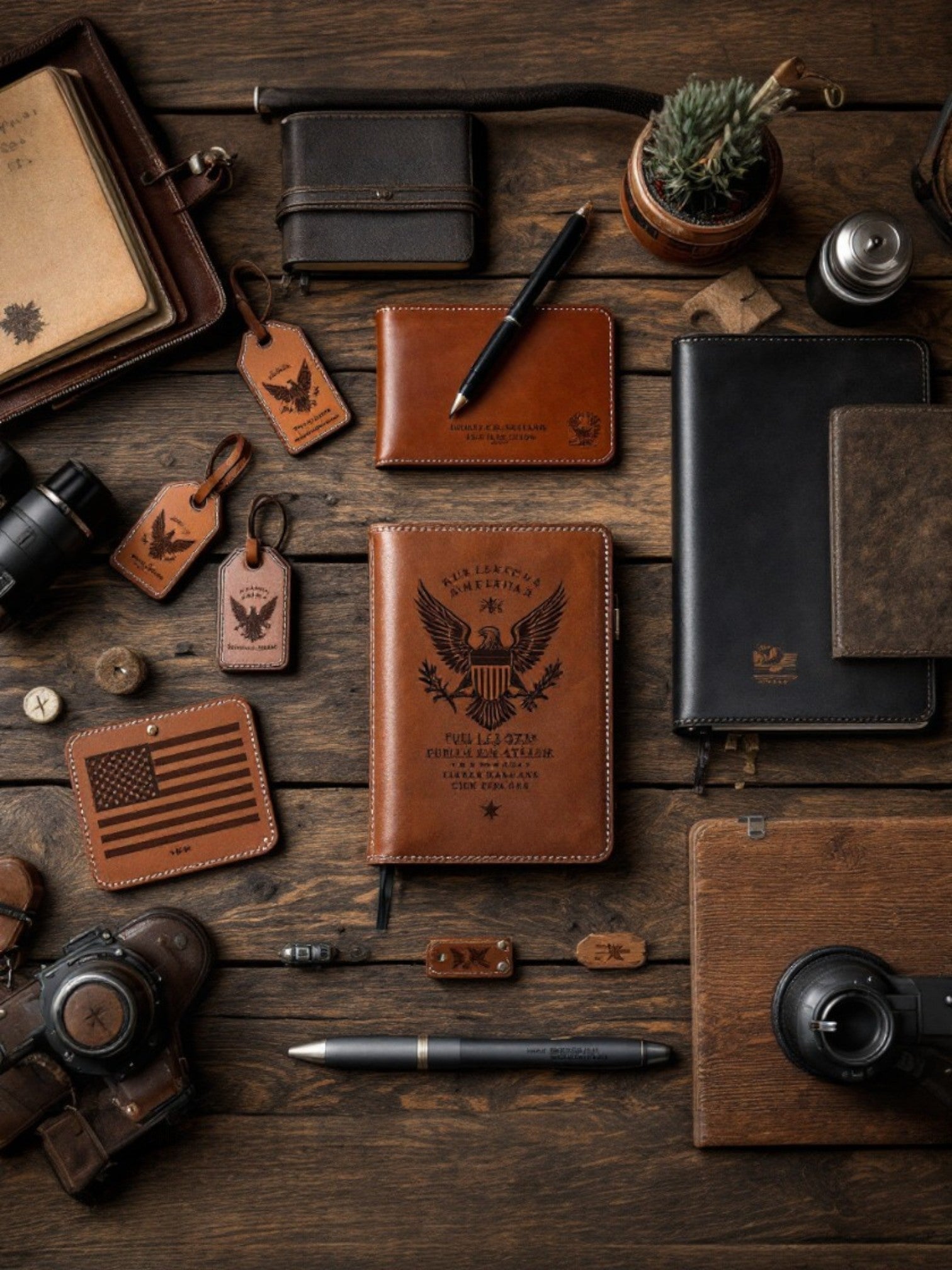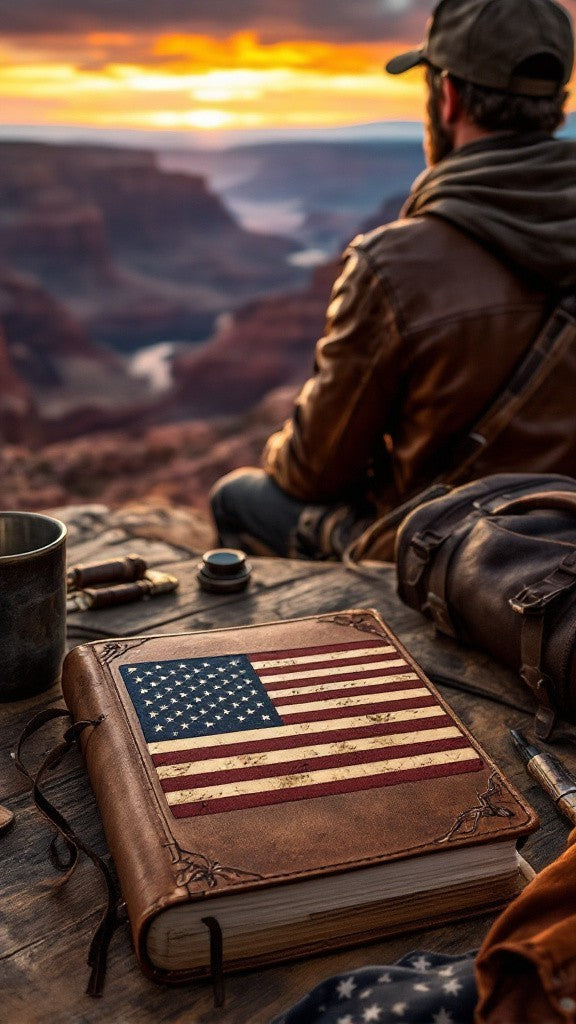
Forged by Fire and Ice: Why Full-Grain Leather Thrives in Extreme Conditions
Share
Picture this: You're standing on a windswept ridge in Montana, temperature dropping fast as storm clouds roll in. Your synthetic gear is already showing stress fractures from the cold, but your leather gloves feel more supple than ever. There's a reason cowboys, arctic explorers, and military units have trusted leather for centuries — it's one of the few materials that actually performs better under pressure.
At Wyoming Jack, we've heard countless stories from customers who've put their gear through hell and lived to tell about it. From Alaskan fishing guides whose leather duffle bags have survived years of saltwater spray and sub-zero temperatures, to oil rig workers whose leather boots have walked through conditions that would destroy lesser materials in weeks.
The Science of Leather's Weather Resistance
Full-grain leather's exceptional weather performance isn't magic — it's biology and chemistry working in perfect harmony. When an animal lived, its hide was designed to protect against everything nature could throw at it: UV radiation, moisture, temperature extremes, and physical trauma. That protective capability doesn't disappear when the hide becomes leather; if anything, proper tanning enhances these natural defenses.
The fiber structure of full-grain leather contains natural oils and proteins that remain flexible at temperatures where synthetic materials become brittle. This is why a quality leather jacket feels more comfortable at 20 below zero than a plastic raincoat feels at room temperature.
"I've seen synthetic tactical gear fail in the field more times than I can count. But a properly made leather holster? It gets better with abuse." — Former Special Forces operator, now Wyoming Jack customer
Temperature Extremes: Hot and Cold Performance
Leather's molecular structure allows it to expand and contract without losing integrity. In extreme heat, the natural oils in full-grain leather help maintain flexibility and prevent cracking. Desert nomads have used leather water containers for millennia because leather actually helps regulate temperature through evaporative cooling.
In extreme cold, leather's fiber structure maintains elasticity long after synthetic materials become rigid and prone to failure. A leather knife roll used by an ice fishing guide in Minnesota will still roll and unroll smoothly at temperatures that would make nylon brittle enough to shatter.
We've tested our leather backpacks in both 120°F desert conditions and -40°F mountain environments. The results? While straps and buckles may need adjustment, the leather itself showed no structural compromise across this 160-degree temperature range.
Water: Friend or Foe?
The relationship between leather and water is more nuanced than most people realize. While leather isn't waterproof in the technical sense, quality full-grain leather is remarkably water-resistant and handles moisture exposure far better than expected.
When a leather travel bag gets caught in a downpour, the surface tension of properly finished leather causes water to bead and run off rather than immediately soaking through. Even when moisture does penetrate, leather's natural structure allows it to dry without losing shape or developing the musty odors that plague synthetic materials.
The Self-Healing Properties of Wet Leather
Here's something most people don't know: controlled moisture exposure actually helps leather maintain its structural integrity. When leather gets wet and dries naturally, the fibers realign and tighten, essentially "healing" minor stress points and surface scratches.
Commercial fishermen using leather toiletry bags on their boats report that pieces exposed to regular salt spray develop an almost armor-like durability over time. The salt water, rather than destroying the leather, creates a natural preservation effect similar to traditional tanning processes.
UV Radiation: Leather's Natural Sunscreen
While prolonged UV exposure can affect any material, full-grain leather has built-in protection that synthetic materials lack. The same tannins that preserve the leather also provide natural UV resistance, preventing the rapid degradation seen in plastics and fabrics.
Ranch workers who keep leather journals in their shirt pockets report minimal fading even after years of high-altitude sun exposure. Compare this to synthetic materials that can become brittle and discolored after just months of similar treatment.
The patina development process we discussed in previous articles actually enhances UV resistance over time. As leather ages and develops its protective patina layer, it becomes increasingly resistant to sun damage.
Real-World Testing: Extreme Environment Stories
Arctic Expedition Gear
Dr. Sarah Chen, a glaciologist who spent six months in Antarctica, credits her expedition duffle bag with surviving conditions that destroyed most of her team's synthetic gear. "Everything else became brittle and cracked in the cold, but the leather stayed flexible. When we needed to repair other equipment, we actually used leather scraps as patches because nothing else would bend in those temperatures."
Desert Survival Training
Military survival instructor Jake Morrison uses Wyoming Jack gear in his desert training courses. "I've seen students' synthetic gear fail in the first 48 hours — zippers seize from sand, fabric degrades from UV exposure, plastic buckles crack from heat cycles. But the leather pieces? They look better after a week in the desert than they did when we started."
Maritime Conditions
Captain Maria Gonzalez, who runs fishing charters off the Oregon coast, keeps her charts and navigation tools in a leather briefcase that's been soaked by rogue waves more times than she can count. "Salt water destroys everything on a boat eventually, but that case just gets more character. Five years of exposure and it's still protecting my equipment."
Maintenance in Extreme Conditions
The beauty of leather in extreme environments is that it requires minimal maintenance to maintain peak performance. Unlike synthetic gear that needs special treatments, coatings, or replacement parts, leather maintenance in harsh conditions follows the same basic principles as everyday care.
Pre-Exposure Preparation
Before heading into extreme conditions, lightly condition your leather gear. This doesn't mean saturating it with oils, but rather ensuring the natural oils are at optimal levels. A properly conditioned leather holster will handle moisture exposure better than one that's been neglected.
For extended exposure to salt water or extreme cold, consider using leather cleaning wipes to remove surface contaminants before they can penetrate the leather.
Field Maintenance
In extreme conditions, the best maintenance is often simply removing debris and allowing natural drying. Resist the urge to use heat sources for drying wet leather — the controlled evaporation that happens at ambient temperature actually strengthens the leather's structure.
If your leather belt gets caked with mud or sand, gentle brushing with available materials (even pine needles or coarse fabric) can remove debris without damage. Leather's dense fiber structure protects against surface abrasion that would destroy softer materials.
Comparing Material Performance
To understand leather's superiority in extreme conditions, it helps to compare performance across different scenarios:
Temperature Cycling
Leather: Maintains flexibility from -40°F to 120°F
Nylon: Becomes brittle below 10°F, degrades above 80°F
Polyester: Loses shape memory in heat cycles
Canvas: Shrinks and warps with moisture changes
UV Resistance
Leather: Natural tannins provide ongoing protection
Plastics: Degrade rapidly without chemical UV inhibitors
Synthetics: Require special coatings that wear off
Moisture Recovery
Leather: Returns to original shape and flexibility
Cardboard/Paper: Permanent damage from moisture
Metal: Corrosion and rust issues
Fabric: Mold, mildew, and odor retention
Industry Applications: Where Extreme Weather Performance Matters
Military and Law Enforcement
Elite units choose leather for mission-critical gear because failure isn't an option. A leather gun case that protects weapons in Afghanistan's heat and humidity performs equally well in Alaska's frozen tundra. This versatility eliminates the need for environment-specific gear sets.
Commercial Fishing and Maritime
The constant cycle of saltwater exposure, UV radiation, and temperature changes in maritime environments destroys most materials within months. Quality leather gear develops a protective patina that actually enhances performance over time. Fishing guides often report their leather messenger bags performing better after years of abuse than synthetic replacements do after weeks.
Oil and Gas Industry
Rig workers face extreme temperatures, chemical exposure, and mechanical stress. Leather's chemical resistance and durability make it the preferred material for personal gear. A roughneck's leather front pocket wallet survives conditions that dissolve synthetic materials.
Search and Rescue Operations
SAR teams need gear that performs in any condition without warning. When you're rappelling into a canyon to extract an injured hiker, your leather pouch holding critical medical supplies needs to work whether it's 110°F desert or 20°F mountain conditions.
The Economics of Extreme Weather Gear
While quality leather gear represents a higher initial investment, the economics become compelling when you factor in replacement costs and performance reliability. Synthetic gear may cost less upfront, but its limited lifespan in extreme conditions makes it expensive over time.
Consider a commercial guide who relies on gear for their livelihood. Replacing a synthetic bag every season costs more than investing in a weekender duffle bag that improves with use over decades.
Performance Reliability Value
The hidden cost of gear failure in extreme conditions goes far beyond replacement costs. When your leather camera bag protects thousands of dollars of equipment through a dust storm that destroys cheaper alternatives, the value calculation becomes clear.
Professional photographers working in challenging conditions often carry backup synthetic bags but rely on leather for their most critical equipment. The peace of mind alone justifies the investment.
Environmental Considerations
In an era of environmental consciousness, leather's performance in extreme conditions offers sustainability advantages often overlooked. A single piece of quality leather gear that lasts decades prevents dozens of synthetic replacements from entering landfills.
Natural leather biodegrades completely at end of life, unlike synthetic materials that persist in the environment for centuries. When you choose a leather tote bag over synthetic alternatives, you're making both a performance and environmental choice.
Reduced Resource Consumption
The manufacturing energy required to produce replacement synthetic gear over a leather item's lifespan often exceeds the energy used in leather production. A leather desk pad used daily for 20 years consumes fewer total resources than multiple synthetic replacements.
Innovation in Extreme Weather Leather
Modern tanning and finishing techniques have enhanced leather's natural extreme weather capabilities without compromising its fundamental characteristics. Advanced treatments can improve water resistance while maintaining breathability, or enhance cold weather flexibility while preserving heat resistance.
However, the most significant innovations often involve returning to traditional techniques that prioritized durability over speed or cost savings. Our craftsmen at Wyoming Jack use tanning methods that may take longer but produce leather with superior extreme weather performance.
Custom Solutions for Extreme Applications
For customers facing specific extreme conditions, custom leather solutions can optimize performance for particular environments. Personalized leather pieces can incorporate specific treatments or construction techniques suited to intended use conditions.
Testing Your Gear's Limits
Understanding your leather gear's capabilities in extreme conditions requires gradual exposure rather than shock testing. Start with moderate challenges and observe how your leather crossbody bag responds before relying on it in truly extreme situations.
Document performance over time. Many users discover their gear's true capabilities only after months or years of use. That leather laptop bag that seems overbuilt for office use might prove perfect for field research work.
Building Confidence Through Experience
The psychological aspect of gear confidence in extreme conditions shouldn't be underestimated. Knowing your equipment has performed reliably in challenging situations builds the mental resilience needed for extreme environment work.
Many of our customers report that their Wyoming Jack gear becomes a source of confidence in challenging situations. When everything else is uncertain, having reliable equipment provides psychological stability.
The Future of Extreme Weather Leather
As climate change creates more frequent extreme weather events, the demand for truly reliable gear continues growing. Leather's time-tested performance characteristics make it increasingly relevant in an era of environmental unpredictability.
New applications continue emerging as people rediscover leather's capabilities. Urban emergency preparedness, climate-related displacement, and extreme sport evolution all create demand for gear that performs across wide condition ranges.
Integration with Modern Technology
Rather than replacing leather, modern technology increasingly integrates with it. GPS devices protected in leather phone cases survive conditions that destroy unprotected electronics. Solar panels paired with leather gear bags create robust, sustainable power systems for extreme environment use.
The combination of ancient material science and modern technology often produces superior results to purely synthetic solutions. A leather padfolio protecting a ruggedized tablet provides better overall protection than most synthetic cases.
Choosing Gear for Your Extreme Conditions
Selecting leather gear for extreme conditions requires understanding both your specific challenges and leather's capabilities. Consider not just the most extreme conditions you'll face, but the range of conditions your gear must handle.
A leather women's wallet carried by a geologist might face everything from arctic fieldwork to desert heat within a single season. Choosing leather that handles this range eliminates the need for multiple specialized pieces.
Visit our contact page to discuss specific extreme weather applications, or explore our best-selling items to see which pieces have proven themselves in challenging conditions worldwide.
When the weather turns against you, when conditions push equipment to its limits, when failure means more than inconvenience — that's when the true value of quality leather gear becomes clear. It's not just about surviving extreme conditions; it's about thriving in them with equipment that gets better under pressure, just like the people who choose it.

